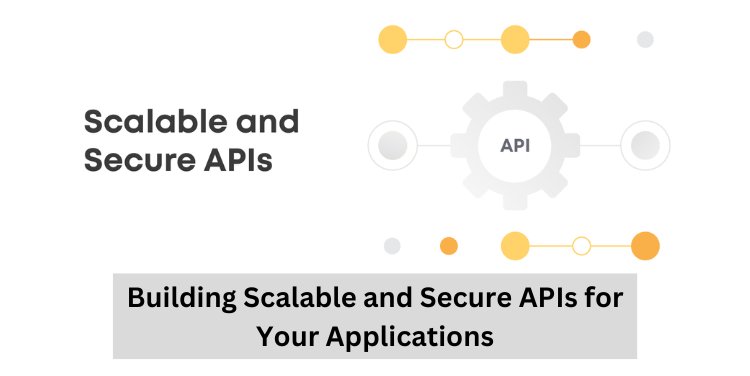Building Scalable and Secure APIs for Your Applications

In today's digital landscape, the importance of building scalable and secure APIs cannot be overstated. APIs (Application Programming Interfaces) serve as the backbone of modern software development, enabling seamless communication and integration between different applications and systems. Whether you're developing a web application, mobile app, or any other software solution, designing robust APIs is essential for ensuring reliability, flexibility, and security. In this blog post, we'll explore key strategies and best practices for building scalable and secure APIs to power your applications effectively.
-
Understanding Scalability: Scalability is the ability of a system to handle growing amounts of work or traffic without sacrificing performance. When designing APIs, it's crucial to anticipate future growth and ensure that your API infrastructure can handle increased demand. Here are some techniques for building scalable APIs:
- Use of Load Balancers: Distribute incoming API requests across multiple servers to prevent overload and improve response times.
- Horizontal Scaling: Scale your API horizontally by adding more instances of the application or services to handle increased traffic.
- Caching: Implement caching mechanisms to store frequently accessed data and reduce the load on backend systems.
- Asynchronous Processing: Offload time-consuming tasks to background processes or queues to keep API response times fast.
-
Ensuring Security: Security is paramount when it comes to APIs, as they often handle sensitive data and serve as potential entry points for cyberattacks. Here are essential measures to enhance API security:
- Authentication and Authorization: Implement robust authentication mechanisms such as OAuth 2.0 or JWT (JSON Web Tokens) to verify the identity of clients and authorize access to resources.
- Data Encryption: Encrypt sensitive data in transit using HTTPS/TLS protocols to prevent eavesdropping and man-in-the-middle attacks.
- Input Validation: Validate and sanitize input data to prevent injection attacks such as SQL injection or cross-site scripting (XSS).
- Rate Limiting: Enforce rate limits to prevent abuse or misuse of APIs, protecting against denial-of-service (DoS) attacks.
- Security Testing: Regularly conduct security audits, penetration testing, and code reviews to identify and mitigate potential vulnerabilities.
-
Documentation and Versioning: Clear and comprehensive documentation is essential for developers to understand how to use your APIs effectively. Additionally, versioning your APIs ensures backward compatibility and allows for incremental updates without disrupting existing clients.
-
Monitoring and Analytics: Implement robust monitoring and analytics tools to track API performance, detect anomalies, and gather insights into usage patterns. Monitoring helps identify potential issues early and allows for proactive maintenance to ensure optimal API reliability and performance.
-
Compliance and Regulations: Stay informed about industry regulations and compliance standards such as GDPR (General Data Protection Regulation) or HIPAA (Health Insurance Portability and Accountability Act) to ensure that your APIs adhere to legal requirements and protect user privacy and data security.
Building scalable and secure APIs is essential for the success of your applications in today's interconnected digital ecosystem. By following best practices such as scalability planning, stringent security measures, clear documentation, and robust monitoring, you can create APIs that not only meet the needs of your current users but also scale seamlessly to support future growth and innovation. Prioritizing API quality and reliability is key to delivering exceptional user experiences and maintaining trust and credibility in the competitive software landscape.
What's Your Reaction?















